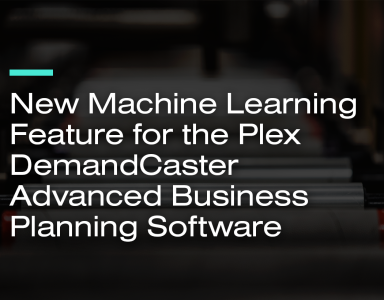
Consumers are fickle. It’s a fact. According to a recent research by Accenture, people report switching brands more than they did a few years ago, despite the fact that brands are investing $90+ billion in loyalty programs. As channels expand, competition increases and customers increasingly expect extraordinary experiences that rock their worlds, it’s getting harder and harder for companies to predict demand.
We heard a lot of about this last week when our team attended IBF’s Business Planning, Forecasting & S&OP: Best Practices Conference in sunny Orlando. We had the opportunity to hear what some amazing brands like Target and Nike are doing to improve their planning, forecasting, and SO&P processes. Unbelievable stuff! But a comment I heard from a ‘lesser known brand’ is what struck me most. Apparently, 46 percent of companies that have an S&OP process in place, center their process around spreadsheets. Wow!
Don’t get me wrong, in theory, there’s nothing wrong with spreadsheets. Spreadsheets are a top go-to productivity tool for supply chain planners, and if your organization is small, or in start-up mode, spreadsheets can offer an effective, low-cost tool for planning. But once the number of SKUs you’re managing starts heading north of 100 or 150, spreadsheet limitations become problematic—and compounding when it comes to S&OP. Why? Because successful S&OP requires that the barriers between Operations, Sales, and Finance teams be removed. And, spreadsheets by nature are not collaborative tools.
Spreadsheet data tends to vary widely from business silo to silo because each department holds each spreadsheet independently. This creates data variations between otherwise interdependent business functions. The result is a lack of collaboration that can lead to a failure in planning. Spreadsheets also make it difficult to aggregate different data sets, limiting analysis of the data and resulting insights. In a world that becomes increasingly data-rich by the day, this fact should not be ignored!
Admittedly, moving away from spreadsheets sometimes represents a scary shift for a company. But it doesn’t have to if an organization is careful not to go too far down the road with spreadsheets in the first place. Affordable and intuitive supply chain planning software that rapidly delivers efficiency and productivity gains over manual spreadsheet manipulation is readily available. These solutions, like DemandCaster, offer a consistent set of data, viewable by all relevant users, to yield consensus-based demand plans.
One of the many benefits of S&OP is being able to run the business around one set of numbers, whereby Operations, Sales, and Finance all agree on anticipated sales and the company’s ability to meet them. This inevitability requires collaboration. And collaboration requires software.
Contact us if you would like to learn how DemandCaster can help you end the spreadsheet chaos and reap the benefits of an agile, collaborative S&OP process.


